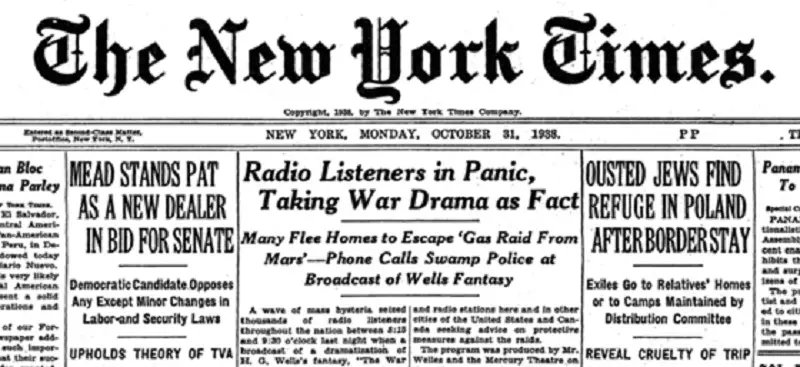Hypodermic Needle Theory, also known as Magic Bullet Theory (hypodermic syringe model or transmission-belt model) was promulgated by Harold Lasswell in 1920s. It was written in the book “Propaganda Technique” in the World War.
The theory is a linear model of communication and talks about media’s power on audience. The message, in this theory, is said to be like a magic bullet which enters the minds of audience and injects a particular message. The theory explains how media controls what the audience views and listens to and the effects, which can be immediate or later in future.
The words bullet and needle are used to show the powerlessness of the audience as media impacts public opinion and behavior change. The theory was also influenced by media behaviorism of 1930s.
The “Magic Bullet” theory graphically assumes that the media’s message is a bullet fired from the “media gun” into the viewer’s “head”.
-Berger, 1995

Concepts in Hypodermic Needle Theory
The popularization of mass media along with the increase in advertising industry or propaganda have affected, both positively or negatively, on audience. It is dangerous, as a huge mass is influenced directly and at the same time. Messages injected can have the desired response which can cause problems and destruction or rule and uniformity.
Audience cannot resist the received message from media and it creates a uniform thinking among people. A fixed mindset and perception is created. Even a single piece of information can cause many brain alterations and change opinions subconsciously.
Public is taken to be vulnerable as message is always infused and media is tremendously strong. The theory believes that there are no other sources of media or alternative media to compare the media’s message to. Media is the strongest at the time of crisis and in the time of war when people depend on media for all the information. The theory was said to be used in Second World War by Germany and US.
The theory is said to be based on assumptions and not empirical findings. It is based on supposition of human nature or biological nature. External stimuli are considered to encourage instincts and reactions.
“People’s Choice” is a study conducted in 1940 by Lazarsfeld about the election campaign of Franklin D. Roosevelt, which found that only few specific messages are injected to the audience by media. People are more influenced by interpersonal communication.
Features of Hypodermic Needle Theory
- Humans are believed to act uniformly to their stimuli and instincts.
- Media injects or inserts messages into the people’s brain as propaganda and manipulation like that by a bullet or syringe.
- Messages have their own intention and are sent to get desired outcomes.
- The effect of messages is supposed to be encompassing, strong, immediate and dangerous.
- Messages are supposed to create public opinion and change behavior of the audiences.
- Mass of people is made to think in a similar way by the media.
- The audience is always thought to be vulnerable and passive.
Examples of Hypodermic Needle Theory
“Panic broadcast” was when radio adaptation of H. G. Wells’ play “War of the Worlds” was being broadcasted as radio drama in 1938 as a Halloween episode which was directed by Orson Welles. The play was presented as news bulletins. Citizens understood the play as people of other planet attacking a place in New Jersey. A large group of population believed the broadcast and the message of alien invasion caused a mass panic to millions of people.
Similarly, in Second World War, the German leaders used movie industry to show their power in the world and unify the people for war in 1940s. Later, U.S. also used their own movie industry to create negative image of the Germans and portray them as evil. They justified their actions to their own people with the help of media. News is often bias and exaggerating too.
The gender role concept has also been injected in every person’s mind. According to it, all women must be thin, tall, fair, romantic and things like that. The brain takes information from advertisements and changes our opinions in a subconscious level without us realizing it. Media has been changing the self image of every person.
Criticisms of Hypodermic Needle Theory
- The message flow is always from sender to receiver or top to bottom.
- The audience is passive and susceptible and are easily influenced by the message which might not be true every time. But the reactions of people differ. Some people can be passive whereas some people might not believe in media.
- The theory has been proved to fail by many studies like “The People’s Choice” research for voting pattern and political behavior during the time of Franklin D. Roosevelt. The study showed that the pattern was affected by media in minimum amount but was more affected by interpersonal communication. Studies show that media has selective influence on mass.
- The theory is not taken as empirical (verifiable by observation or experience rather than theory or pure logic).
- There are many media options with the growth of media outlets today. The theory is not applicable in today’s world.
